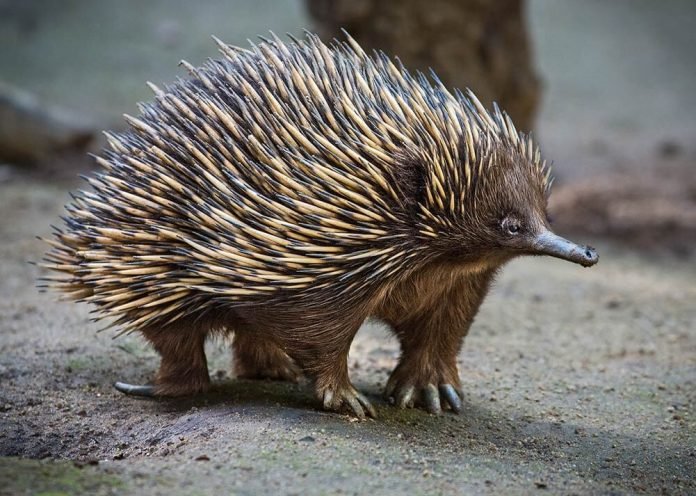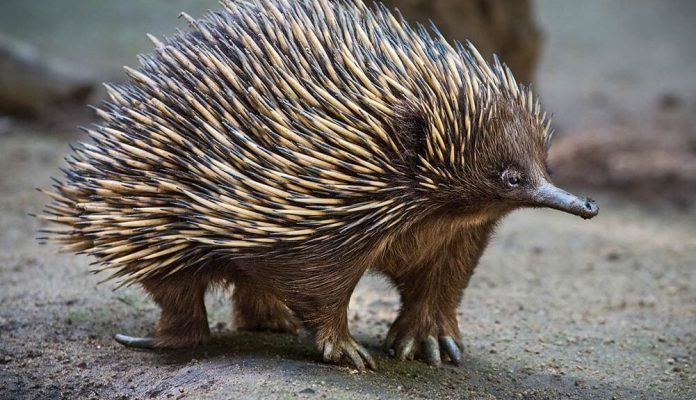
So, why should you care about echidnas? Well, apart from being downright adorable with their awkward waddles and quirky appearances, they provide us with a glimpse into how evolution can create truly unique species. Let’s dive into the top ten facts about echidnas that might just surprise you.
Echidnas Are One of the Few Egg-Laying Mammals
Here’s the thing: while most mammals give birth to live young, echidnas are one of only five species of egg-laying mammals. Yes, you read that right! These unique creatures belong to a special group called monotremes, which also includes the platypus.
When it comes to reproduction, echidnas lay one egg at a time, which they incubate in a pouch. After about ten days, a tiny, helpless echidna emerges, also known as a puggle. The mom then nurses her little one with milk that is secreted from her skin—no nipples here! This quirky method of reproduction is one of the many things that make echidnas so fascinating.
They’re Covered in Spines
If you’ve ever seen an echidna, you couldn’t help but notice those spines. They’re a defense mechanism against predators, much like a porcupine’s quills. These spines aren’t just for show—they’re made of keratin, the same material as human nails.
But here’s a fun fact: echidnas can also curl up into a ball when they feel threatened. Imagine a ball of spines rolling around! This unique adaptation keeps their softer underbelly safe while their spikes deter predators. If you ever find yourself in the wild, spotting an echidna is a treat—and remembering this little defense tactic might help you appreciate them even more.
Echidnas Have a Unique Snout
Echidnas possess a long, slender snout that looks similar to a beak. This snout is not just for show; it serves multiple functions. First, it’s their primary tool for foraging, helping them dig into the ground to find ants and termites, which make up a big part of their diet.
The snout is also equipped with a long, sticky tongue that can extend far beyond the nose. This tongue can reach out to 18 centimeters (about 7 inches) long! So, when you visualize an echidna snuffling around, it’s more like a tiny vacuum cleaner going after its favorite snacks. Isn’t that a delightful image?
They Have a Very Slow Metabolism
Honestly, echidnas aren’t in a hurry. They have a slow metabolism that helps them thrive in their natural habitats. This slower pace means they can survive on fewer calories compared to other mammals. So, while you might think these critters need to munch all day, they can actually go for long periods without food.
This slow metabolism is a key part of their survival strategy, especially in environments where food can be scarce. It’s like when you’re saving for a big purchase; you learn to make every little bit last longer. Echidnas do the same with their energy!
Their Feet Are Adapted for Digging
When you see an echidna, take note of their feet. These adorable creatures have powerful claws that make them expert diggers. They utilize these claws to burrow into the ground while searching for food.
Echidnas can dig down to three feet deep in search of their favorite meals. This digging ability also helps them create a shelter from predators and harsh weather. Picture yourself reaching into the earth for a little snack—echidnas do it all the time, and they’re quite good at it!
They Can Regulate Their Body Temperature
One fascinating thing about echidnas is their ability to regulate their body temperature in changing environments. This is particularly important in Australia, where temperatures can fluctuate significantly.
To cool down, echidnas will often seek refuge in burrows or under vegetation. You might think of them as little thermostats of the animal kingdom, adjusting their environment for comfort as needed. This remarkable ability allows them to thrive in different climates and contributes to their survival.
They Have a Special Sense of Smell
When it comes to finding food, echidnas have a keen sense of smell that’s crucial for their survival. You might be wondering how these little spiny creatures track down their favorite ants and termites. Well, their sensory organs are highly developed, allowing them to sniff out food from quite a distance.
Using their snout, they can detect pheromones and scents in the air, leading them right to their next meal. It’s like they have a built-in GPS for food! So next time you see an echidna sniffing around, remember that they are on a tasty treasure hunt.
Echidnas Are Solitary Creatures
Echidnas prefer to keep to themselves, making them quite solitary compared to other animals. They’re not the type to form large social groups or packs. Instead, each echidna has its own territory, where it forages, sleeps, and raises its young.
This solitary nature doesn’t mean they don’t come together for mating. During the breeding season, you might spot a few males following a female in hopes of winning her affection. But for the most part, these spiny creatures enjoy their alone time, living life at their own pace.
They Can Live for Over 50 Years
If you ever meet one of these remarkable echidnas, you might be greeting a long-lived friend. Echidnas can live for over 50 years in the wild, which is quite impressive compared to many other animals. This longevity gives them plenty of time to adapt to their environment.
Their long lifespan means that they can witness changes in their habitat and adapt to new challenges. It’s like having a wise old friend who’s seen it all and has stories to tell. Isn’t that a comforting thought?
Conservation Status of Echidnas
Unfortunately, echidnas face some threats, mainly due to habitat destruction and climate change. While they’re not currently considered endangered, keeping an eye on their populations is crucial. Conservation efforts focus on protecting their natural habitats and raising awareness about their unique needs.
You see, every creature, big or small, plays a role in its ecosystem. By protecting echidnas, we’re also helping preserve the balance of their environment. So next time you hear about these fascinating creatures, remember that your awareness can make a difference.
In conclusion, echidnas are more than just quirky animals with spines; they’re fascinating beings that showcase the diversity of life on Earth. With their egg-laying habits, unique eating strategies, and impressive adaptations, there’s so much to learn from them. The next time you think about echidnas, picture them snuffling around in the wild, doing their thing. And who knows? You might just feel inspired to learn more about the wonders of the natural world!

